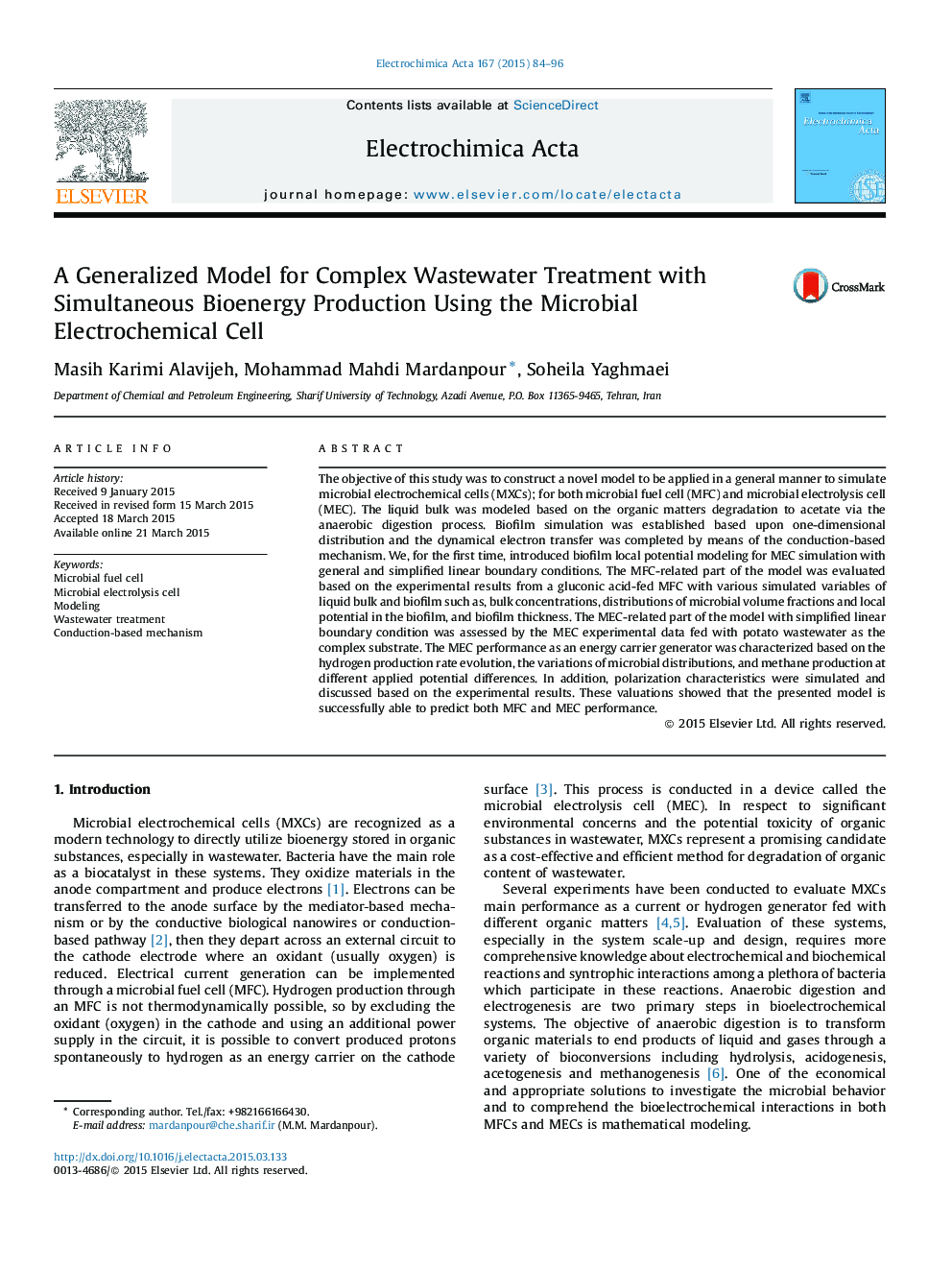| Article ID | Journal | Published Year | Pages | File Type |
|---|---|---|---|---|
| 184328 | Electrochimica Acta | 2015 | 13 Pages |
•A generalized model of MXC extended on the spatial distributions of biocatalysts.•The model validation was successfully conducted with complex substrates.•Acetate concentration has an important role in the output current fluctuations.•Higher applied voltage decreased the acetoclastic methanogens activity.
The objective of this study was to construct a novel model to be applied in a general manner to simulate microbial electrochemical cells (MXCs); for both microbial fuel cell (MFC) and microbial electrolysis cell (MEC). The liquid bulk was modeled based on the organic matters degradation to acetate via the anaerobic digestion process. Biofilm simulation was established based upon one-dimensional distribution and the dynamical electron transfer was completed by means of the conduction-based mechanism. We, for the first time, introduced biofilm local potential modeling for MEC simulation with general and simplified linear boundary conditions. The MFC-related part of the model was evaluated based on the experimental results from a gluconic acid-fed MFC with various simulated variables of liquid bulk and biofilm such as, bulk concentrations, distributions of microbial volume fractions and local potential in the biofilm, and biofilm thickness. The MEC-related part of the model with simplified linear boundary condition was assessed by the MEC experimental data fed with potato wastewater as the complex substrate. The MEC performance as an energy carrier generator was characterized based on the hydrogen production rate evolution, the variations of microbial distributions, and methane production at different applied potential differences. In addition, polarization characteristics were simulated and discussed based on the experimental results. These valuations showed that the presented model is successfully able to predict both MFC and MEC performance.
